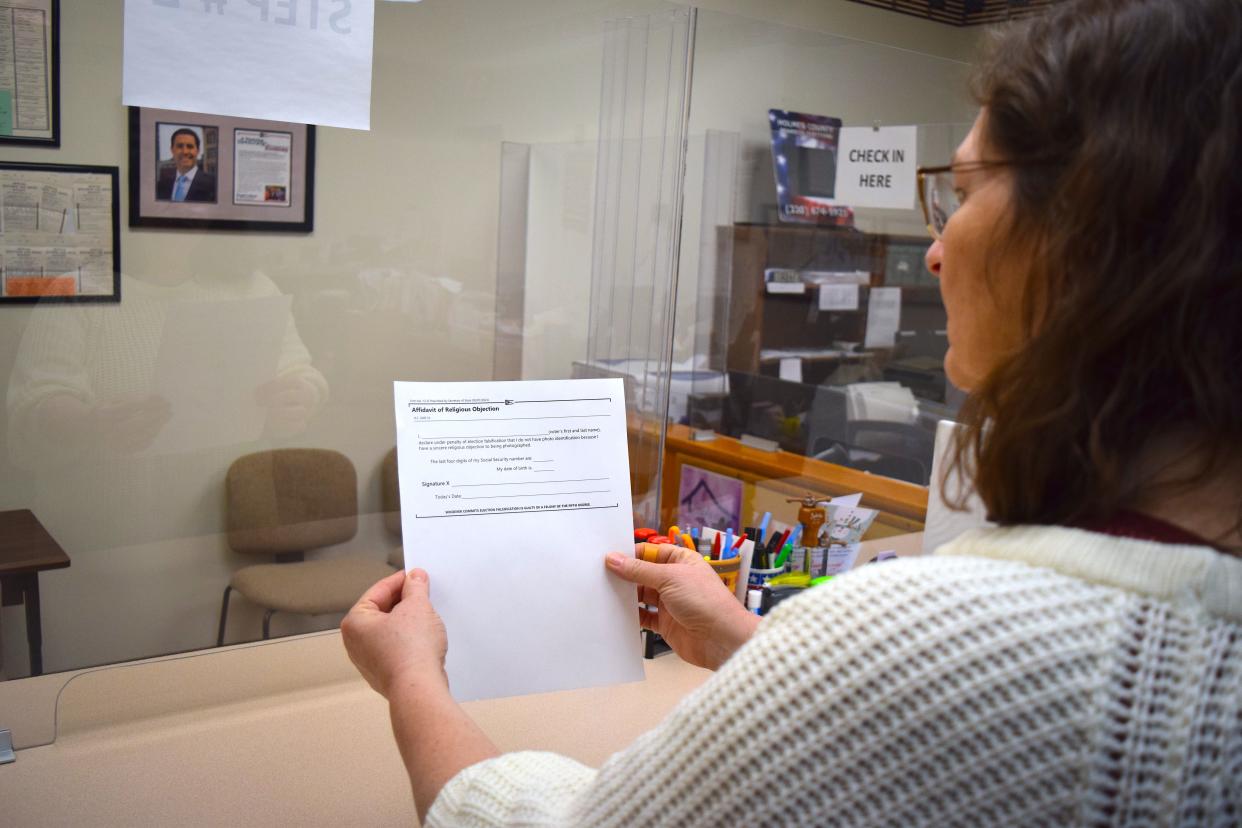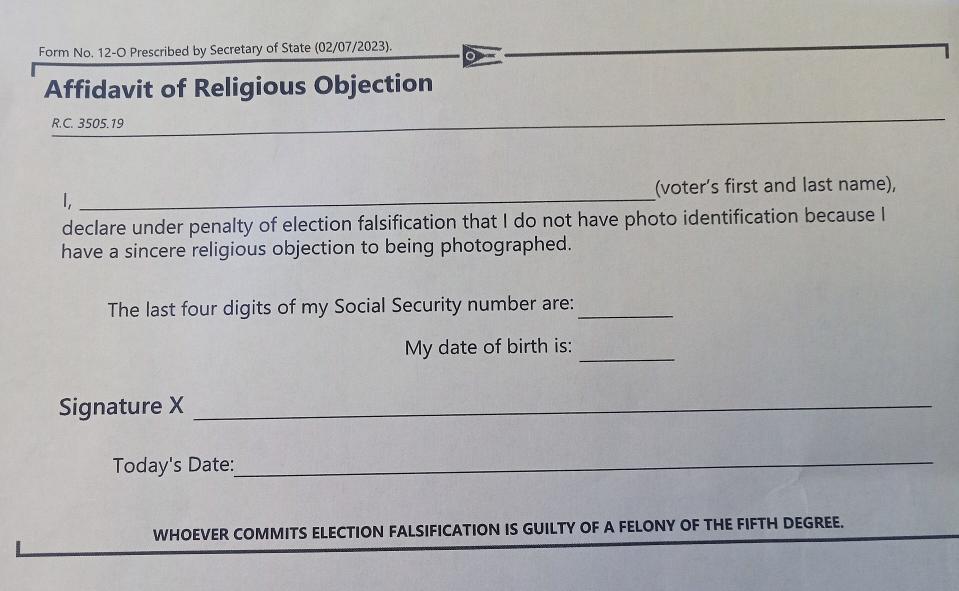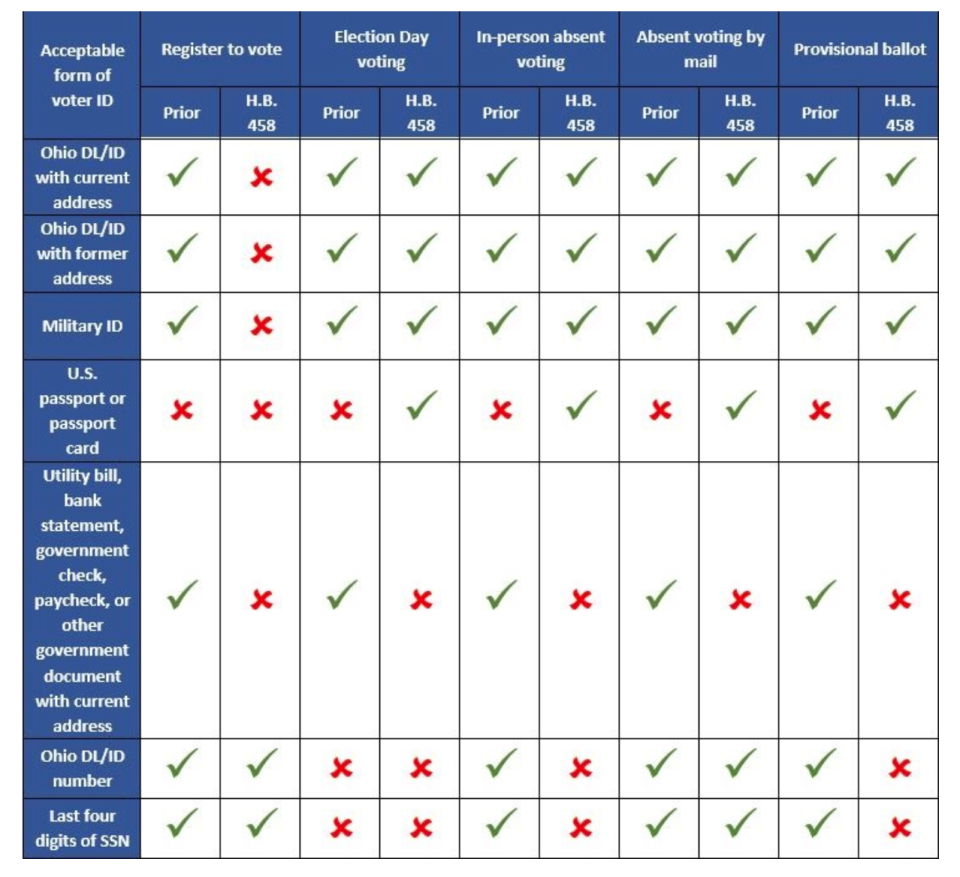2023 May primary: Will Ohio's new photo ID requirement impact Amish voters?

MILLERSBURG − As Ohio’s primary approaches, a strict new photo ID requirement is stirring concerns among older voters, military veterans, out-of-state college students and in Amish communities.
Holmes County Commissioner Joe Miller wonders about the impact of House Bill 458, which was designed to respond to conservative voters unsettled by unfounded claims of widespread fraud and persistent conspiracy theories over the accuracy of U.S. elections.
"We've got about 20,000 Amish people in our community and more and more are voting," Miller said. "A third of our voters are Amish, and we want to get more and more of them registered."
According to a story from the Associated Press, of the 35 states that request or require a photo ID to vote, Ohio is now the ninth Republican-controlled state to move to a strict law allowing few to no alternatives.
The change adds passports as valid ID, but eliminates nonphoto documentation such as a bank statement, government check or utility bill for registration and in-person voting. Military IDs also are no longer acceptable when registering to vote.
With nearly one-third of the 18,072 registered Holmes County voters being Amish (based on estimates from the 2020 Amish Directory that is published every five years), Miller believes voting may be more difficult for many, particularly Amish sects that stand against having their pictures taken.
However, according to Wayne Wengerd, an Amish man who serves as director of the Ohio Steering Committee, he has not had any reports from within the Amish communities of Holmes and Wayne counties of potential problems with the new law. Wengerd does not believe it will be a problem.
Wendy Weiser, vice president for democracy at the Brennan Center for Justice, said the new Ohio law undercuts the Republican narrative about the state having a record of clean and well-run elections.
“Ohio election officials have long been adamant that this wasn’t needed, that Ohio had a good system for vetting and rooting out any fraud and the proof was in the pudding,” she said.
Republican state Sen. Theresa Gavarone, a supporter of the law, said the change will make it harder to cheat.
It already has led to frustration and confusion, in part because of the fast-approaching state primary on May 2.
Republican Secretary of State Frank LaRose ordered counties to begin implementing the fast-tracked law so it would be in effect for the primary, though its start date falls within the early voting period. Waiting until fall, LaRose said, “would result in a clear violation of Ohio law.”
What happens at the polls if voters don't have a photo ID?

According to LaRose's office, if a voter does not have a photo ID because of a religious objection to being photographed, the precinct election official or board staff must provide a state form.
Rob Nichols, communications officer, explained an Amish voter would fill out the Affidavit of Religious Objection form, including their name, signature and last four digits of their Social Security number.
The elections board will then check with the Bureau of Motor Vehicles to make sure the voter does not have a photo ID. The vote is cast provisionally, and once there is confirmation of no photo ID, the vote is counted.
"That all happens in the few days after Election Day," Nichols said.
"Starting April 7, anyone (without a driver's license) can go into their BMV and get their free state ID; and if they have a religious exemption to their photo being taken, they can get one without their photo on it, and that can be used to vote or to register to vote. There is a path for whatever they choose."
Meanwhile, a legal challenge to the law by a Democratic law firm remains unresolved. The lawsuit alleges the law creates “needless discriminatory burdens,” including by requiring photo IDs, making it harder to correct minor mistakes on ballots and restricting mail balloting.
Veterans’ organizations and county recorders, particularly in the populous, Democratic-leaning counties that include Columbus, Cleveland and Cincinnati, have been vocal about the law excluding county-issued veteran photo IDs, though it does allow military IDs, to vote. They cost less and are valid longer — 10 years — than a driver’s license.

The Associated Press contributed to this article.
This article originally appeared on The Daily Record: New voter ID law in Ohio could impact Amish voters

